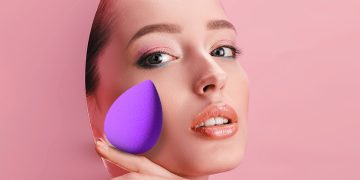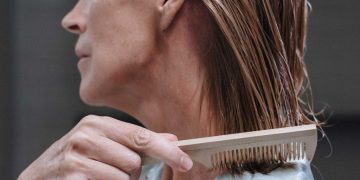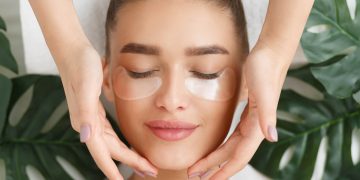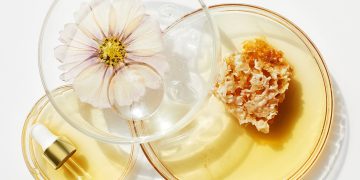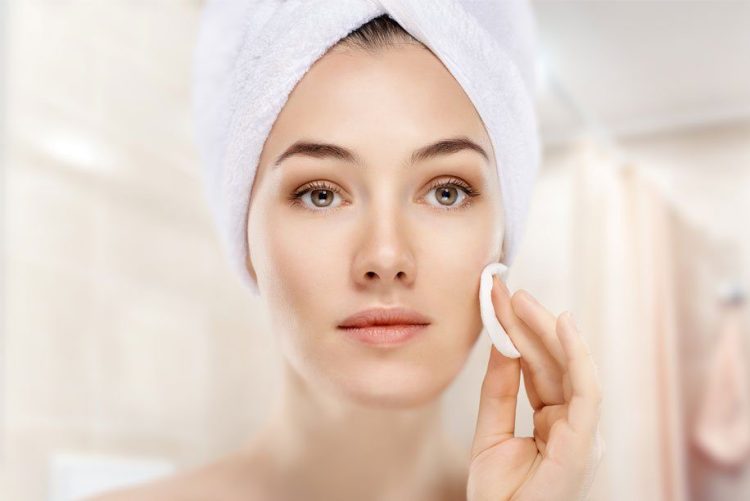Creating the perfect skincare routine is essential for achieving healthy, glowing skin. However, what works for one person may not work for another. The key to a personalized routine lies in understanding your skin type and tailoring your regimen accordingly. Whether you have oily, dry, or combination skin, finding the right products and steps to take will help you address your unique needs. In this guide, we’ll walk you through how to identify your skin type, the key products for each type, the correct way to layer products, and the difference between daily and weekly skincare steps.
1. Identifying Your Skin Type (Oily, Dry, Combination, etc.)
The first step in building a skincare routine is understanding your skin type. Your skin type can change with the seasons or as you age, but it’s important to start by identifying it to ensure that you choose the most appropriate products for your skin’s needs. Here’s how to determine your skin type:
Oily Skin
If you have oily skin, you may notice a shiny appearance, particularly in the T-zone (forehead, nose, and chin). Pores may appear enlarged, and you may experience breakouts or blackheads due to excess oil production. Oily skin often feels greasy by midday.
Dry Skin
Dry skin tends to feel tight, rough, and flaky. You may notice dry patches, redness, or irritation, especially in colder weather. Fine lines and wrinkles may also be more pronounced, and your skin may feel uncomfortable after cleansing.
Combination Skin
Combination skin is a mix of oily and dry areas. You may notice that your T-zone is oily, while other parts of your face (like the cheeks) feel dry or tight. This type of skin requires a balance of products to address both oily and dry areas.
Normal Skin
Normal skin is well-balanced, not too oily or dry. It has a smooth texture, even tone, and no noticeable dry patches or excessive shine. Pores are not enlarged, and breakouts are rare.
Sensitive Skin
Sensitive skin is prone to redness, irritation, or reactions to certain skincare products. If your skin burns, stings, or becomes inflamed easily, you likely have sensitive skin.
Once you’ve identified your skin type, you can move forward with choosing the right products for your needs.
2. Key Products for Each Skin Type
Different skin types require different skincare products. Here’s a breakdown of the key products for each skin type:
For Oily Skin:
- Foaming or Gel Cleanser: Oily skin benefits from a gel or foaming cleanser, as these help remove excess oil without over-drying. Look for products with salicylic acid or tea tree oil to control breakouts.
- Oil-Free Moisturizer: Even oily skin needs moisture, but opt for a lightweight, oil-free moisturizer that won’t clog pores.
- Exfoliator: Regular exfoliation with a gentle scrub or chemical exfoliant (like AHAs or BHAs) can help clear clogged pores and prevent acne.
- Oil-Free Sunscreen: Look for a mattifying sunscreen that doesn’t leave a greasy residue.
For Dry Skin:
- Cream Cleanser: A rich, hydrating cream cleanser will gently remove dirt and impurities without stripping moisture from the skin.
- Hydrating Toner: A hydrating toner with ingredients like glycerin or hyaluronic acid will replenish moisture and balance the skin’s pH.
- Rich Moisturizer: Use a thick, nourishing moisturizer that contains ingredients like shea butter, ceramides, or hyaluronic acid to lock in moisture.
- Hydrating Serum: Serums with hyaluronic acid, vitamin C, or peptides are excellent for boosting hydration and promoting a healthy skin barrier.
For Combination Skin:
- Gentle Cleanser: Choose a mild, non-stripping cleanser that can handle both oily and dry areas of the skin. Look for formulas that balance hydration without leaving a greasy residue.
- Toner with Balancing Ingredients: A toner that contains witch hazel or chamomile can help regulate oil production in the T-zone while soothing the cheeks.
- Lightweight Moisturizer: Use a moisturizer that’s hydrating but not heavy. Gel-based moisturizers with hyaluronic acid are a good choice.
- Targeted Treatments: You can use different treatments for the oily and dry zones, such as spot treatments for breakouts or a hydrating mask for dry areas.
For Sensitive Skin:
- Gentle Cleanser: A fragrance-free, sulfate-free cleanser will be most soothing for sensitive skin. Opt for a formula that is non-foaming and calming.
- Soothing Toner: Toners with aloe vera, chamomile, or rose water can help reduce irritation and redness.
- Non-Comedogenic Moisturizer: Choose a simple, hypoallergenic moisturizer without added fragrance, alcohol, or harsh chemicals.
- SPF for Sensitive Skin: Look for a mineral-based sunscreen (zinc oxide or titanium dioxide) to avoid irritation.
For Normal Skin:
- Mild Cleanser: A gentle, non-stripping cleanser will keep your skin balanced.
- Hydrating Toner: Even if your skin is not dry, it’s still important to use a toner to maintain the skin’s moisture levels.
- Lightweight Moisturizer: Choose a daily moisturizer that hydrates without leaving a heavy feeling on your skin.
- Sunscreen: A broad-spectrum SPF is essential to protect your skin from UV damage.
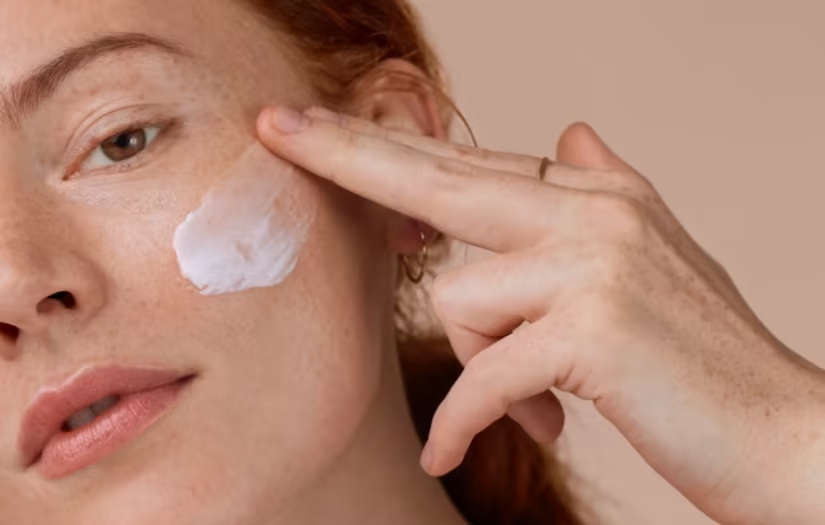
3. How to Layer Products for Maximum Effectiveness
Layering your skincare products in the correct order is essential for maximum effectiveness. Here’s a basic guideline for layering your skincare:
Step 1: Cleanser
Always start with a clean face. Choose a gentle cleanser suitable for your skin type to remove dirt, oil, and makeup.
Step 2: Toner
Apply a toner to balance your skin’s pH and prepare it to absorb the products that follow. Use a cotton pad or your hands to gently press the toner into your skin.
Step 3: Serum or Treatment
Serums contain concentrated ingredients to address specific skin concerns, such as wrinkles, pigmentation, or acne. Apply your serum after toning, while your skin is still damp to lock in moisture.
Step 4: Moisturizer
Moisturizers help to seal in hydration and lock in the benefits of the products you applied earlier. If your skin is particularly dry, opt for a thicker, more hydrating moisturizer.
Step 5: Sunscreen (AM Routine)
In the morning, finish off your skincare routine with a broad-spectrum sunscreen. This will protect your skin from harmful UV rays and prevent premature aging.
4. Daily vs. Weekly Skincare Steps
Your daily skincare routine should focus on basic hydration, cleansing, and protection, while weekly skincare steps provide additional treatments for specific skin concerns. Here’s how to differentiate the two:
Daily Steps:
- Cleansing: Wash your face twice daily to remove dirt, oil, and impurities.
- Toning: Apply a toner to maintain skin balance and prepare for hydration.
- Moisturizing: Hydrate your skin with a daily moisturizer that suits your skin type.
- Sunscreen: Apply sunscreen every morning to protect your skin from UV damage.
Weekly Steps:
- Exfoliation: Exfoliate once or twice a week to remove dead skin cells and promote a radiant complexion. Choose between physical exfoliants (scrubs) or chemical exfoliants (AHA/BHA).
- Face Masks: Incorporate a face mask into your routine once a week for deep hydration, pore cleansing, or other skin treatments. Clay masks are great for oily skin, while hydrating masks are perfect for dry skin.
Conclusion
Building the perfect skincare routine for your skin type doesn’t have to be overwhelming. By understanding your skin’s unique needs and choosing the right products, you can achieve healthy, glowing skin. Remember that consistency is key to seeing results, and don’t forget to adjust your routine as your skin changes. Whether you have oily, dry, combination, or sensitive skin, there’s a routine tailored just for you.











